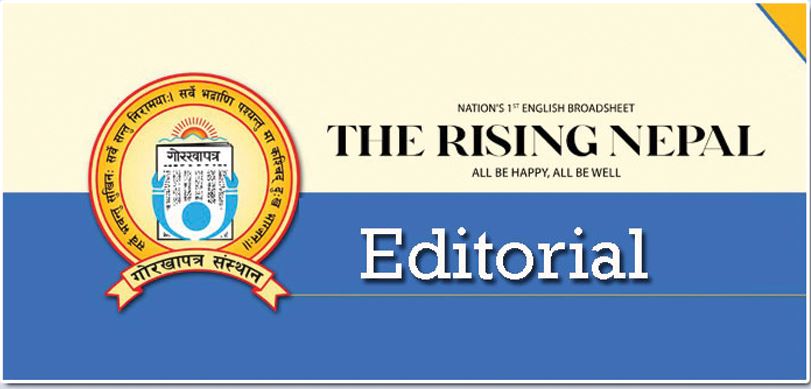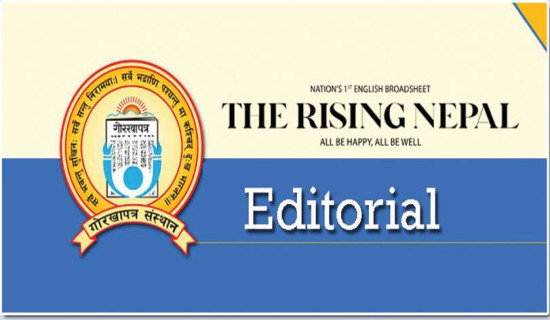- Monday, 18 August 2025
Heed Monsoon Message
The monsoon comes as a boon for Nepal, bringing much-needed rains to the parched fields, replenishing the depleted aquifers, and boosting the water supply across water bodies. When the rains fail to arrive in sufficient quantity in the breadbasket regions in time, the fear of food insecurity ripples nationwide. But it also wreaks havoc across the country. The nation's vulnerability to natural disasters is at its worst during this period. Heavy rain-induced inundations, floods and landslides not only claim hundreds of lives annually but also bring to a halt the operation of roads, bridges, hydropower plants and other infrastructure.
Every year, the Department of Hydrology and Meteorology (DHM) issues warnings for people to stay safe from natural hazards. Although such admonitions before impending disasters go a long way to minimise casualties, many people tend to turn a deaf ear to them. Sometimes, the cost of shrugging off such warnings can have grave consequences. Last year, in response to the forecast heavy rainfalls in some parts of the country to be followed by catastrophic floods and landslides, the government warned against long-route travel, especially in the hilly and mountainous regions. Some heeded the warnings, while some didn't, either out of negligence or because the dissemination of the warnings was not impactful enough. The results were catastrophic: several perished in landslides and floods, including dozens who died in the Jhyaplekhola landslide that buried three vehicles. Several key highways caved in, including the BP Highway.
There were also other disruptions in essential services such as education, health, electricity supply, etc. Galvanised by the scale of the devastation, the government declared dozens of districts disaster zones and pledged to work on a war footing to restore the disrupted services. So far this year, we have not seen the destruction on par with last year's. That said, heavy rains continue to trigger hazardous conditions, with the western and Tarai regions experiencing heavy precipitation. Landslides and flooding have already caused casualties and blocked key roads in various parts of the country. Staying alert in anticipation of one is key to minimising casualties in its wake.
Against these backdrops, heeding the Meteorological Forecasting Division, under the DHM, forecast is imperative. It has been forecast that the weather system is expected to remain active until Friday. Very heavy rainfall is forecast in the western part of the country, while the rest of the country can expect light to moderate precipitation. Heavy rainfalls are also likely in parts of Madhes Province as well as in Koshi, Bagmati, Gandaki, Lumbini, and Sudurpaschim provinces. In Karnali province, heavy rainfall is possible in one or two places. All these forecasts should be taken as warnings by locals and remain alert to avoid unwanted incidents.
This system may cause risks such as landslides, floods, and debris flows. Water levels in large and small rivers, streams, and canals may rise, affecting daily life, agriculture, health, tourism, construction near riverbanks, as well as road and air transport. The DHM has also advised the public and all concerned authorities to stay alert, take necessary precautions, and remain informed with the latest weather updates as monsoon conditions continue nationwide. Remembering the saying, "A stitch in time saves nine," it is high time we heed the predictions. Weather forecasting these days has evolved to become incredibly accurate, although there are still times when forecasts fail.







-square-thumb.jpg)






